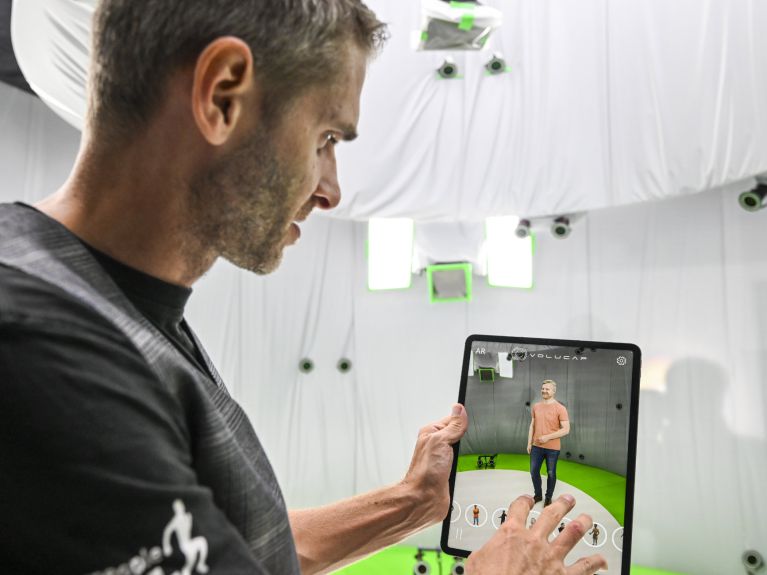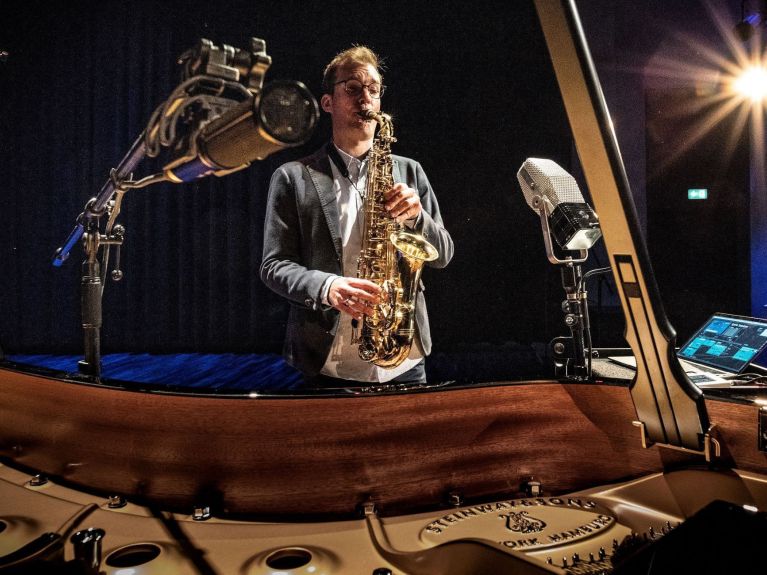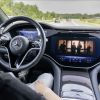How AI helps to boost creativity
AI is acting as a modern-day muse in areas such as film, art and music. These three examples show how AI helps to amplify creativity rather than replacing it.

AI has long been working at a level that even creative professionals tend to find unsettling. However, it can be used in ways that allow it to provide inspiration for new ideas, rather than being a competitor.
Film: big stories, small budgets
An actress is surrounded by a circle of 42 cameras at the film studio in Babelsberg. It takes just a brief moment for her digital twin to be created. The German company Volucap is working on future technologies for film production with artificial intelligence. The Babelsberg film studio that can look back on a long tradition has been operating a so-called volumetric studio since 2018. In a cylindrically shaped room, 42 high-resolution cameras mounted on all sides record an actor or actress from every perspective in a way that enables a detailed 3D image to be created.

This 3D image can be integrated into any film scene by means of AI; and the lighting, camera perspective and background can be flexibly adjusted later on. Volucap itself believes that the technology can also help to democratise the film industry. “If you no longer need a visual effects department for a small production, because you can create elaborate effects simply by entering text, this means that you can tell much bigger stories without needing a huge budget,” says Volucap’s managing director Sven Bliedung von der Heide.

Art: AI as a digital muse
The Berlin-based Polish artist Roman Lipski has used his own body of work to train an AI. The tool analyses the use of colour, composition, contrast and texture. Lipski himself refers to it as his “artificial muse” that inspires new ideas in the same way as a traditional muse. In his current video installation (Quantum Babylon) the artist is also addressing quantum computing as a theme. He appreciates the creative inspiration provided by his AI muse: “The beauty of using AI as an artistic tool lies in the permanent element of surprise it involves. It’s a continuous process, not a one-off exchange. AI supports an open-minded and creative way of thinking and it helps me to use my imagination and to improve my human skills. The decisive aspect for me is that the AI encourages my creativity rather than replacing me.”
Music: a learning tune

It is not the work of ghosts when drums and grand pianos are playing by themselves at the Nuremberg University of Music, but the work of AI. Researchers at the university are exploring ways in which humans and machines can make music together. This involves robot-controlled percussion systems and hybrid grand pianos in which digital and analogue technology is combined, and which react in real time to humans playing music as well as developing their own musical ideas. There are also workshops where children can experiment with generative AI tools to learn how to compose stories made of sound. “Artificial intelligence does not seek to simulate human creativity but to create something new that is genuinely machine-made,” says Sebastian Trump, Professor for Artificial Intelligence and Musical Interaction at the university.


